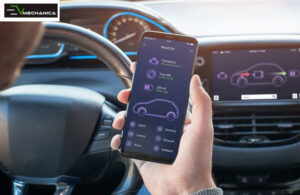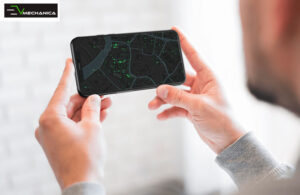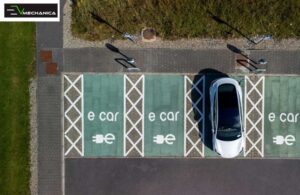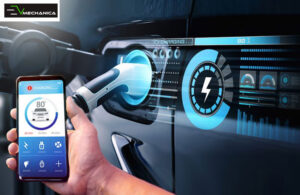 Possessing the potential to revolutionize the electric vehicle (EV) industry by enabling more efficient, convenient, and sustainable transportation, the Internet of Things (IoT) has been portrayed as the link between the digital and physical world that can smoothen the path of the next generation of vehicles.
Possessing the potential to revolutionize the electric vehicle (EV) industry by enabling more efficient, convenient, and sustainable transportation, the Internet of Things (IoT) has been portrayed as the link between the digital and physical world that can smoothen the path of the next generation of vehicles.
The IoT refers to the network of physical devices, vehicles, buildings, and other items embedded with sensors, software, and connectivity that enable them to collect and exchange data. This data can be used to improve the performance, safety, and overall user experience of EVs.
Key Challenges of EV Charging Ecosystem
 Before discussing the how Use of IoT in Electric Vehicles can help to address problems related to electric vehicles, let’s understand some of the key challenges that EV charging infrastructure management faces, it includes,
Before discussing the how Use of IoT in Electric Vehicles can help to address problems related to electric vehicles, let’s understand some of the key challenges that EV charging infrastructure management faces, it includes,
- Sky high costs related to field visits for troubleshooting charge points.
- Every minute of downtime can result in lost business and customer discontent.
- Lack of mechanisms that can optimize energy consumption during peak hours.
- Needs regular health checks and fault detection to quickly respond to critical failures.
- Real-time alerts & notifications for important events are needed.
- Requires handling a high volume of telemetry data generated from charging sessions.
- Needs a robust integration of various protocols & connectivity options for smooth operations.
How Can We Use IoT in Electric Vehicles in Real-Time?
 Starting with a major Use of IoT in Electric Vehicles is the integration of intelligent microcontroller in these vehicles to keep track of the vehicle’s parameters and makes a prioritized combinatorial decision.
Starting with a major Use of IoT in Electric Vehicles is the integration of intelligent microcontroller in these vehicles to keep track of the vehicle’s parameters and makes a prioritized combinatorial decision.
Highlighting the Use of IoT in Electric Vehicles, connected cars are vehicles that are equipped with sensors and connectivity technologies that allow them to communicate with other vehicles and infrastructure.
This includes data on traffic conditions, parking availability, and charging station locations. By using this data, EVs can be optimized to reduce energy consumption, improve range, and reduce emissions. Additionally, connected cars can also be used to improve safety by providing drivers with real-time information about potential hazards and enabling autonomous driving features.
Another major Use of IoT in Electric Vehicles is in the area of charging infrastructure. The IoT can be used to optimize the charging process by using data from the battery management system (BMS) and weather forecast to determine the best time to charge the vehicle.
By using this data, the EV can be charged at times when electricity is cheapest and when the grid is not heavily loaded, which can help to reduce costs and increase the reliability of the charging process.
Additionally, the Use of IoT in Electric Vehicles can be stressed further as it can also be used to monitor the charging process and detect any issues that may arise, such as overheating or overcharging.
One can also see the Use of IoT in Electric Vehicles to improve the overall user experience of EVs. For example, the use of connected devices such as smartphones or smart watches can be used to control certain features of the EV, such as heating, cooling, or charging status.
Apart from these perks, the Use of IoT in Electric Vehicles can be used to provide drivers with real-time information about the state of the vehicle, such as battery level, remaining range, and energy consumption. This information can be used to make more informed decisions about when to charge the vehicle and when to drive more efficiently.
In addition to these benefits, the IoT can also help to support the growth of the EV industry in other ways. For example, the use of big data and analytics can be used to analyze data collected from connected vehicles and infrastructure to identify trends and patterns that can be used to improve the design and performance of EVs.
Another Use of IoT in Electric Vehicles is to support the development of more sustainable transportation systems by providing data on traffic patterns, parking availability, and charging station locations that can be used to improve the overall efficiency of the transportation system.
One of the biggest challenges facing the EV industry is the lack of infrastructure. IoT technologies can be used to overcome this by using data collected from EVs to optimize charging and improve the usage of the infrastructure. This can help to improve the overall efficiency of the transportation system and reduce the need for additional infrastructure investments.
One can see the Use of IoT in Electric Vehicles in the development of Smart Cities.
EVs are a key component of smart cities because they help to reduce air pollution and traffic congestion.
The IoT can be used to optimize the use of EVs in smart cities by providing real-time information on traffic conditions, parking availability, and charging station locations.
In a Nutshell…
 With the electric vehicle segment going mainstream, a robust and efficient management system is a must that can regularly check the maintenance and parameters of the vehicle.
With the electric vehicle segment going mainstream, a robust and efficient management system is a must that can regularly check the maintenance and parameters of the vehicle.
Use of IoT in Electric Vehicles is more than just remote monitoring as IoT serves as a fundamental block for developing next-gen applications such as smart charging and vehicle-to-grid.
